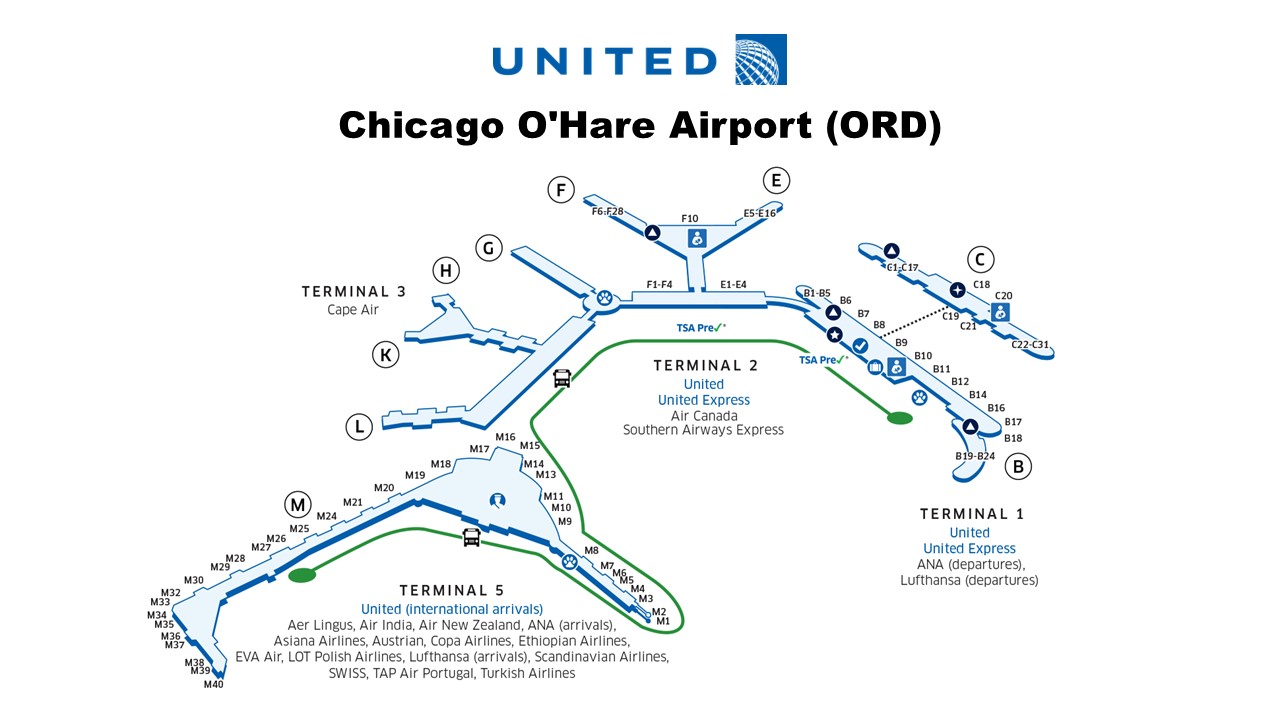The Fight For O'Hare: United And American Airlines' Strategies For Airport Supremacy

Table of Contents
United Airlines' Strategy for O'Hare Dominance
Hub Expansion and Network Optimization: United Airlines' position as a dominant carrier at O'Hare is deeply rooted in its hub status. They leverage this by continually expanding their network and optimizing connectivity. This involves significant investments in infrastructure, such as new gates and expanded terminal space, allowing for increased flight operations. Their network optimization strategy focuses on creating extensive connecting flight options, particularly for international travelers, making O'Hare a more attractive and efficient travel hub.
- New Routes: Recent additions include expanded service to several key European cities, boosting O'Hare's international appeal.
- Increased Frequency: United has increased the frequency of flights on many popular domestic and international routes, offering travelers greater flexibility.
- Strategic Partnerships: Collaborations with other airlines expand reach and provide access to additional destinations, enhancing O'Hare's connectivity.
Customer Experience and Loyalty Programs: Recognizing that a positive customer experience is paramount, United invests heavily in improving passenger amenities and loyalty programs at O'Hare. Upgraded airport lounges, faster check-in processes, and enhanced customer service initiatives are all part of their strategy to build customer loyalty and attract new passengers.
- Improved Lounge Access: Enhanced United Club lounges at O'Hare offer premium amenities for frequent flyers.
- Streamlined Check-in: Mobile check-in options and automated kiosks reduce waiting times.
- Personalized Service: United emphasizes personalized customer service to create a more positive travel experience.
Technological Advancements and Efficiency: United leverages technology to optimize operations at O'Hare, aiming to reduce delays and improve efficiency. This includes investments in advanced baggage tracking systems, mobile apps for seamless travel management, and predictive analytics to optimize flight scheduling.
- Real-Time Baggage Tracking: Passengers can monitor their luggage throughout their journey, reducing anxiety and improving the overall experience.
- Improved Flight Scheduling: Data-driven optimization of flight schedules minimizes delays and improves on-time performance.
- Mobile App Enhancements: The United app provides a comprehensive platform for managing bookings, checking in, and accessing real-time flight information.
American Airlines' Counter-Strategies at O'Hare
Strategic Route Development and Partnerships: American Airlines' strategy at O'Hare focuses on strategic route development, targeting underserved markets and creating unique travel options to compete with United's extensive network. They also leverage strategic partnerships to broaden their reach and offer passengers more choices.
- Niche Route Development: American has focused on establishing routes to destinations less served by United, creating a unique value proposition for travelers.
- Alliance Partnerships: Collaborations with other airlines provide access to broader networks and enhanced passenger connectivity options.
- Competitive Pricing: American often offers competitive pricing strategies on key routes to attract passengers away from United.
Focusing on Specific Market Segments: American targets specific passenger demographics with tailored marketing campaigns and pricing strategies. For instance, they may focus on attracting business travelers with premium amenities and flexible scheduling, while simultaneously offering budget-friendly options for leisure travelers.
- Business Traveler Focus: American offers enhanced amenities and loyalty program benefits geared towards business travelers.
- Leisure Travel Packages: Targeted marketing campaigns and bundled deals attract leisure travelers seeking value-for-money options.
- Dynamic Pricing: American employs dynamic pricing strategies to adjust fares based on demand, optimizing revenue while remaining competitive.
Operational Efficiency and Cost Reduction: American Airlines strives for operational efficiency and cost reduction at O'Hare to maintain competitiveness. This involves investing in new technologies, streamlining processes, and forming partnerships to improve efficiency and reduce operational costs.
- Technology Investments: American invests in technology to improve fuel efficiency, optimize crew scheduling, and enhance maintenance processes.
- Process Optimization: Streamlined processes for ground handling, baggage handling, and check-in reduce operational costs.
- Strategic Partnerships: Collaborations with ground handling companies and other service providers can improve efficiency and lower costs.
The Future of the O'Hare Battle
Predicting the Outcome: While United currently holds a significant advantage due to its extensive hub operations and established network, American Airlines' strategic moves suggest a sustained competitive battle. The future likely hinges on factors like economic conditions, passenger demand, and the success of each airline's strategic initiatives.
Impact on Passengers: The intense competition between United and American Airlines at O'Hare translates into benefits for passengers. Increased competition often leads to lower fares, more flight options, and enhanced services as airlines strive to attract and retain customers.
Conclusion: The Ongoing Fight for O'Hare Airport Supremacy
The battle for O'Hare airport supremacy between United and American Airlines is a dynamic and evolving competition. Both airlines employ sophisticated strategies, ranging from extensive network development and technological advancements to targeted marketing and operational efficiency. The ultimate victor will depend on the long-term success of these strategies and the ever-shifting landscape of the air travel industry. Who will win the fight for O'Hare? Share your thoughts on United and American Airlines' strategies for airport supremacy!

Featured Posts
-
 Manfred And The Mlb Speedway Classic A Look At Expected Fan Turnout
May 12, 2025
Manfred And The Mlb Speedway Classic A Look At Expected Fan Turnout
May 12, 2025 -
 Michael Johnsons Grand Slam High Speed Competition Top Athletes And Impressive Prize Money
May 12, 2025
Michael Johnsons Grand Slam High Speed Competition Top Athletes And Impressive Prize Money
May 12, 2025 -
 Payton Pritchards New Shoe Deal Celtics Star Joins Converse
May 12, 2025
Payton Pritchards New Shoe Deal Celtics Star Joins Converse
May 12, 2025 -
 Nba Playoffs Knicks Vs Pistons Betting Odds Picks And Bet365 Bonus Code Nypbet
May 12, 2025
Nba Playoffs Knicks Vs Pistons Betting Odds Picks And Bet365 Bonus Code Nypbet
May 12, 2025 -
 New Tom Cruise And Ana De Armas Sighting Reignites Dating Speculation
May 12, 2025
New Tom Cruise And Ana De Armas Sighting Reignites Dating Speculation
May 12, 2025
